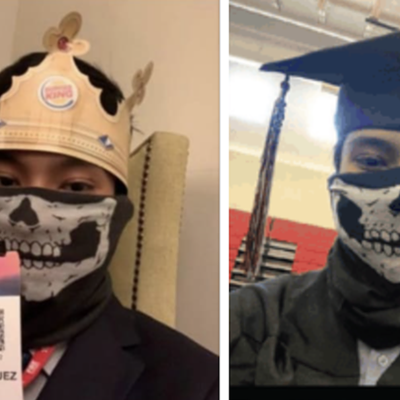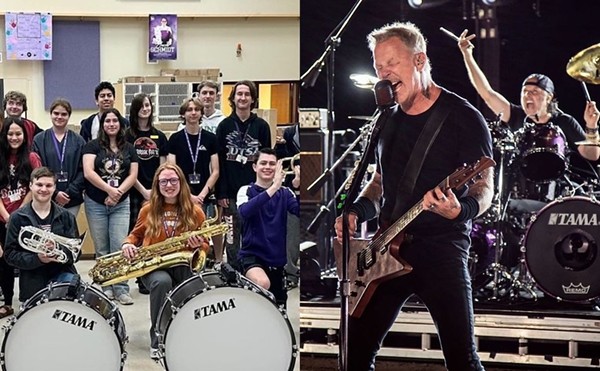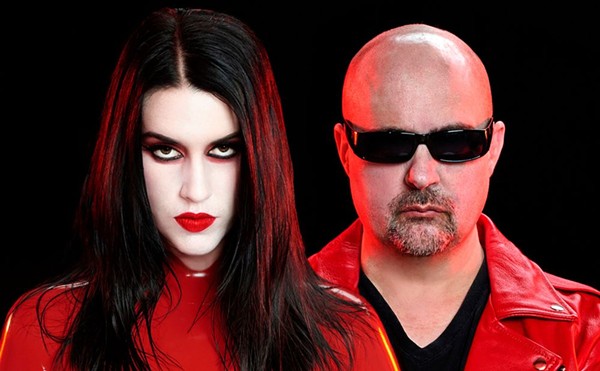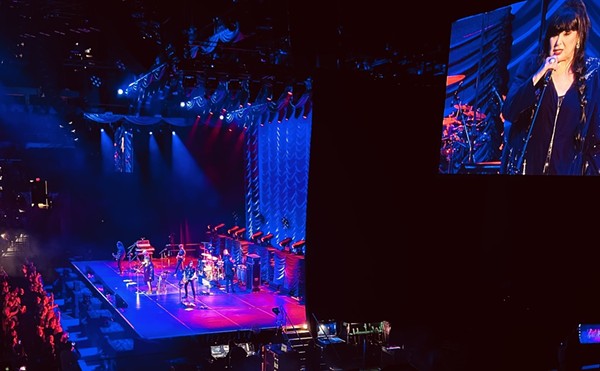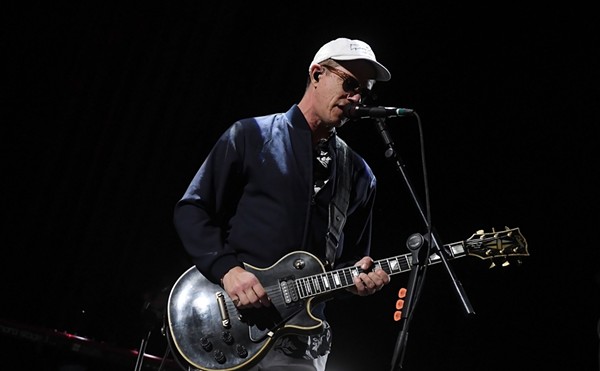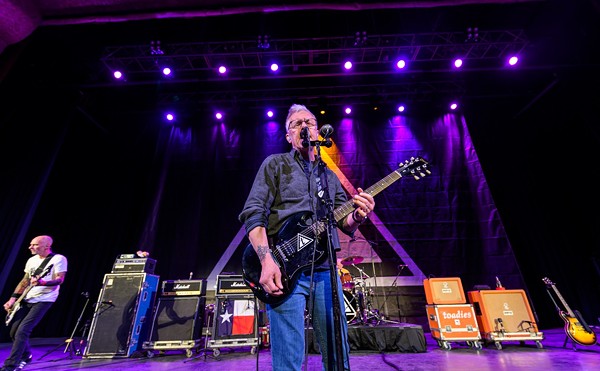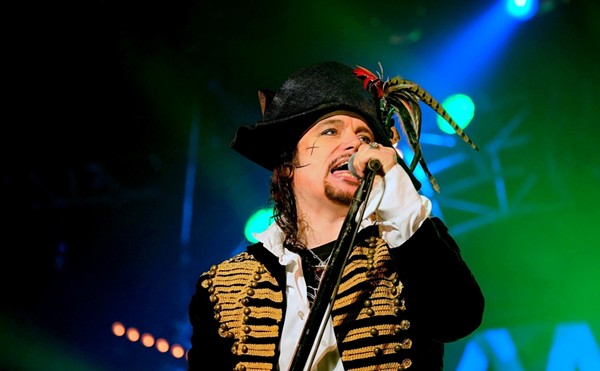Other than that rare moment when Ozzy Osbourne mistook the Alamo for a port-a-potty, musicians in San Antonio almost never make national headlines. However, this city did host one event that was so momentous it seized the world’s attention. It was exactly 10,944 days ago that the Sex Pistols stormed through town and played at Randy’s Rodeo. Though some were confused by the Pistols’ unlikely choice of venue, the band’s calculated intent for their tour of the American South was to incite the redneck population, question their notion of masculinity (not quite like Brokeback Mountain), and create as much spectacle and chaos as possible. On January 8, 1978, the Sex Pistols’ infamous show in San Antonio succeeded in that regard.
For the 30-year anniversary of the Sex Pistols SA moment, my interest is not to recount the blood that was spilled nor the pies that were thrown. Instead I want to discover what happened locally in the aftermath of that groundbreaking night. I began digging around to learn more about the people involved in the local ’80s new-wave/punk/hardcore scene. The results were more improbable than I could have imagined.
First, I stopped by Hogwild Records. I sensed someone there would have a connection to the early SA punk community. I wasn’t wrong. Steve Alejandro and Jaime Gonzalez graciously gave me an abundance of names to pursue.
I began by visiting Michael Escamilla, who attended the Sex Pistols show as a 16-year-old high-school junior. In talking to Michael, I learned the main reason he attended the performance was to see his guitar teacher Galen Niles’ heavy-metal band, Ultra. (Even in San Antonio’s definitive punk-rock moment, the shadow of heavy metal is never far away.) After that night, perfecting Foghat riffs was no longer a part of Escamilla’s plan. The energy and attitude of the Sex Pistols inspired him to pursue a different approach to music. With his brother David and friends he started the Shit Players, which quickly morphed into No Way Muffo, considered by some to be SA’s first new-wave band.
Though it’s unclear if their first show was at a Shakey’s Pizza or a Pizza Hut, No Way Muffo was best known for their guerrilla “mall tour” in which they posed as Christmas choral groups under various names. As Michael remembers, “It was always a catastrophe of one sort or another.”
Their most notable shopping-mall performance was at Wonderland Mall on December 22, 1982, when they signed up under the ominous but overall honest name “The Central Catholic Avant-Garde Rock Band.” An irked mall manager called security, who stopped the event. A few escaped. Three ended up in jail for the night. The next day their performance made the cover of the News. The headline read “Grotesque Punkers Rock Mall.” No Way Muffo had joined the Sex Pistols in one important regard: They both made front-page news in San Antonio.
Though they are best-known for this one event, what intrigued me most about No Way Muffo was the diversity of paths the various members later pursued. Their first drummer was a guy named Greg Marsh, who constantly wore pajamas and watched Mr. Rogers’ Neighborhood. Michael remembers him later working as a weapons analyst for the FBI. I googled “Greg Marsh” and “weapons” and came across an article written by a Greg Marsh for an organization called the Partnership for Global Security. (I’m curious if securing shopping malls is the first step in their agenda.)
Other band members included David Martin Davies, the news director for Texas Public Radio; Lloyd Walsh, one of San Antonio’s most talented painters (who later played in a group called Swaziland White Band that opened for Nirvana); David Escamilla, a family-practice physician in Austin; and Mike Barry, an architect in NYC. Michael Escamilla’s path is equally interesting. The turning point in his musical career is worth examining.
Rewind to 1984. Escamilla moved to Austin and formed a band called Tubular Face. During that time, he became friends with the then-obscure singer Daniel Johnston (who later vaulted to national fame when Kurt Cobain of Nirvana repeatedly wore his Hi, How Are You? T-shirt).
The experience of watching Daniel develop severe bipolar disorder affected Escamilla deeply. He faced the dilemma of continuing with Tubular Face or returning to medical school. “Ultimately, I felt that I had a chance to do something in the research world that if I focused just on music at that time I would never get to.” Escamilla is currently attempting to map the gene for bipolar disorder and schizophrenia in the Latino community from his office next to Bond’s 007 Rock Bar.
Next, I returned to my list of names and looked for Thomas Crofts, the drummer for a hardcore band called the Raging Woodies. Through some hardcore googling I found a Professor Thomas Crofts at East Tennessee State University who teaches Medieval Literature. My search also brought me these student comments: “Most enjoyable experience with Chaucer yet! Hard to pay attention sometimes, cause well, he’s sexy.” And “He is very interesting and an expert in this field. Easy on the eyes as well.” From the Raging Woodies to Chaucer — could this be the same person? It was.
Crofts remembers joining the Raging Woodies by answering a flyer he saw at Hogwild Records. He and singer Trent Schmiedehaus then recruited a guitar wizard named Brad Parks from the band Bang Gang.
Like most punk bands of this time, the Raging Woodies often played unusual venues. In Crofts words, “Before the Bone Club or Taco Land became a regular thing, most of the bands never had a permanent home. I remember getting a call from the Hickoids that they had a gig at a truck stop in Killeen and we joined them. Shows like that were typical.”
At one point the Raging Woodies were booked to play a huge show in Austin at Liberty Lunch opening for The Minutemen. Schmiedehaus wasn’t able to make the show, supposedly because his mother wouldn’t let him leave the house. A friend, Wayne Thomas, filled in for the night by singing grunts and random ABBA lyrics. Crofts explains, “He had no experience singing. We got him up on stage and he turned out to be a real nut.” Wayne became the Raging Woodies’ singer.
Thomas brought a unique, satirical approach to the band. “I always did something different and my band never knew what was going to happen,” he recalls.
The best moments were when he would bait the skinheads into one of his pranks: “At the Bone Club we started having a bunch of tough guys there. I brought out a stuffed, plush bunny rabbit. I started talking about how much I loved that bunny-rabbit and someone would have to be a very terrible and cruel person to ever harm the bunny rabbit. A guy in a leather jacket surges through the crowd and tears it apart! He’s screaming as he does it and I’m thinking to myself, ‘Guy, you acted tough by tearing up a plush bunny rabbit.’”
In addition to singing for the Raging Woodies, Thomas was also the person behind the cult cable-access show A Guy Playing Records, which featured Thomas playing vinyl and tapes of hard-to-find, underground music. The image on the screen was an evolving wash of colors created by a character generator, plus the title of the song.
“My show was a part of the punk thing of go-make-your-own-band,” says Thomas. “This was make-your-own-radio-station.”
At that point, before remote controls became available, channels were changed by moving a slider across the plastic cable box that sat on top of the television. A Guy Playing Records just happened to be programmed at night on the channel between Ted Koppel’s Nightline and Johnny Carson’s Tonight Show. “When you went between the two, this very bizarre explosion of colors occurred,” Thomas says. “A lot of people who never went to a show later told me that they saw A Guy Playing Records.”
The most notorious band of this era was the Fearless Iranians From Hell. It began with members of the Marching Plague, who posed as terrorists by wearing ski masks. Though the band was considered a joke, the joke confused many people because their first singer was actually Iranian. Rumors were that he moved to San Antonio in exodus from the fall of the Shah of Iran in 1979. According to John Cohen (an informal photographer of the era), Fearless only played three or four shows with that lineup before different people began revolving through the band. The Iranian singer is now but one part of the great myth of the Fearless Iranians From Hell.
Now, with Iran in the news again, one might think that a reunion tour would be in order. But the great irony is that many members of the band have moved on to successful careers as businessmen and doctors and don’t want to be connected to the band anymore. Nonetheless, I was able to track down one former member, who asked to be called “Mr. X.”
“Most Iranians when they saw where the band was coming from they appreciated it. They saw this is a spoof of racial profiling by villifying a whole nation based on what their leaders do,” Mr. X said.
Opinions vary on how seriously the bandmembers took themselves after the Iranian singer left the band. Somehow, people outside of San Antonio took them very seriously. By refusing to do interviews, they created a wall of enigma, even if everyone in town knew who they were.
Mr. X continues, “Some guy put up a website with a bounty on the band. A thousand dollars per person or something like that. One of us in the band had to get a lawyer to take the website down. Most intelligent people knew it was a joke.”
Trent Schmiedehaus left the Raging Woodies to sing for the Marching Plague. Their performances might have been the most ballistic of all the local bands. Trent recalls one show where about 100 people piled on top of him and he tore a ligament in his knee. Amazingly, the Marching Plague played at the Cameo Theater with the Butthole Surfers shortly afterward. Trent sat in a chair in the middle of the stage with his leg in a full cast. At Trent’s prodding fans threw money on stage to help pay his medical bills. “More than a small amount of money was collected,” Trent remembers.
Most people I talked to agreed that by 1986 the shows were spinning into anarchy. Trent recalls the Marching Plague’s last show: “It was a pivotal moment in the San Antonio scene. The show was crazy out-of-control and I think someone got badly hurt. The scene had grown so large it attracted people just looking to get in fights. Skinheads would show up and cause a lot of trouble. That night after it ended I said to myself ‘That’s it. I’m done.’ And I never turned back. And I say that respectfully because I certainly retained a fondness for what we had done.”
Trent now lives in Austin and counsels incarcerated youths. He incorporates diverse elements such as Buddhist meditation and yoga into his approach. “The work itself is challenging but it’s a good fit for me,” he says. “I seem to have a connection with the people I work with. I’m very excited about the work I do.”
A few days later, I ran into Hogwild’s Steve Alejandro at the grocery store. I commented on the difficulty of including all the different bands from the era – Toejam, X-Men, Pulsating Love Flower, Prenatal Lust, the Rejects, Dem Vackra, Lung Overcoat, and Mystery Dates, to name a few.
On the way to the checkout, Steve summarized the era better than anyone else I had spoken with: “At the time, we all complained about how bad it was to be in San Antonio. Looking back, there was actually a lot going on. We didn’t know how good we had it.” •
Which San Antonio show changed your life?
Tell us at sacurrent.com




